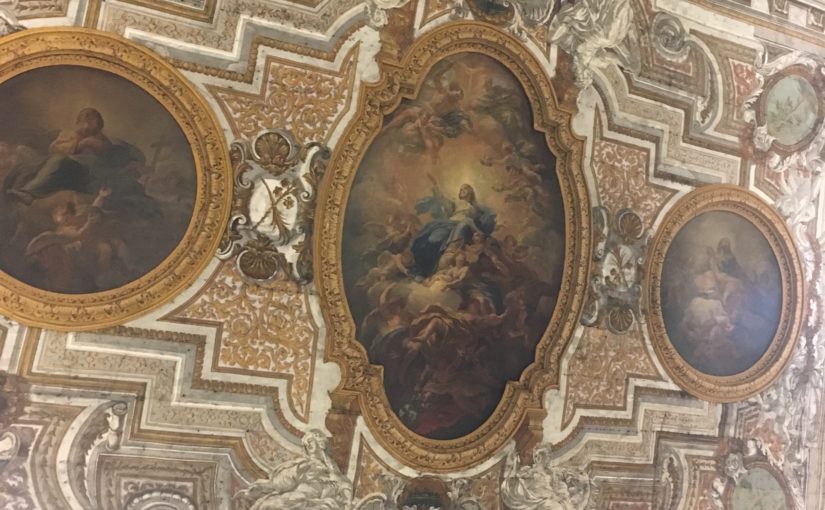Dear reader–
Today marks the halfway point of my time in Italy. As I look over my two-and-a-half weeks here, I see several signs that my Italian has improved, even in such a short amount of time. First, I’ve finally started dreaming in Italian. (These dreams usually involve me speaking broken Italian to native speakers and not being understood, but the Italian is still there!) Second, last night when I went to Mass, I understood a whole sentence said by the priest. This excited me, because I usually only understand individual words or phrases. Following a whole sentence is much harder. Finally, last night I tried to speak in Italian to the employees at our favorite take-out pasta place. They were delighted that I was trying to speak Italian (which was gratifying) and very complimentary of my speaking skills (which was encouraging).
I remain painfully aware that my sentences are awkward and my vocabulary is limited. It is still difficult for me to understand a native Italian speaker. However, I am greatly encouraged by the progress I have made in the first half of my trip.
Meanwhile, I continue to notice more and more about the people and culture of southern Italy. One thing I love to do is explore all the churches here. As many of you know, I have a passion for sacred architecture. The chance to visit old Italian churches in person was one reason I was so excited for this trip. Sure enough, the churches here are vastly different from the ones I have seen at home. If I had to pick a word to describe the Italian style, it would be “rich”.
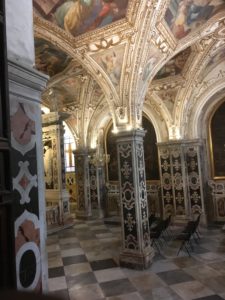
Every church, from the Cathedral to the smallest parish church, has marble floors and columns, massive paintings on the ceiling, an abundance of statues, and elaborate altars.
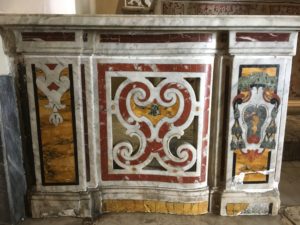
America has plenty of beautiful churches, but I have not seen any to match the sheer ornateness of the Italian churches. It is almost overwhelming at times.
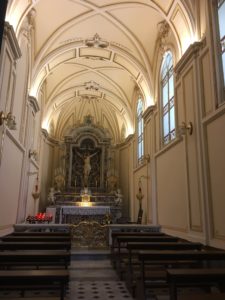
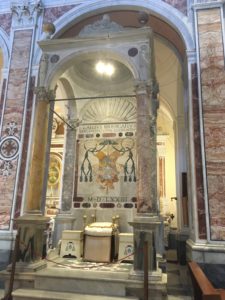
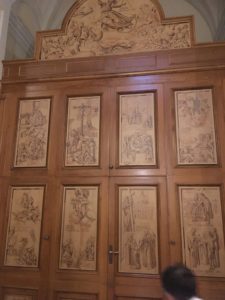
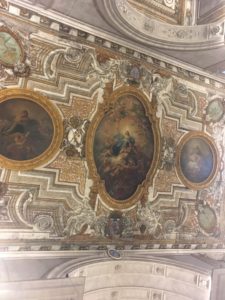
I realize that I have to “get to know” the Italian churches just like I have to “get to know” the Italians: I need to get accustomed to their way of presenting themselves, the language they use, and the things they value.
In a similar vein, I have been fascinated to compare the way Italian Catholics worship as compared to American Catholics. On the one hand, there is a lot in common. Even though I can’t actually understand the Italian spoken in the Mass, I always know exactly what the priest is saying because the liturgy is the same. On the other hand, certain Italian customs have surprised me. For example, in classic Italian style, the “line” for communion is really more of a movement en masse towards the altar. Whoever stands up the quickest gets to the front first. In the end, such an approach still gets the job done; nevertheless, it shocked my organized American sensibilities the first few times.
Another tidbit of life here is the street performers. The fact that the streets (and trains) have performers is not so exceptional. What is exceptional is that they all play the same song. Every. Single. Time. The song is called “Despacito”, a slightly raunchy but very catchy Spanish song about love and summertime–for which, not coincidentally, Italy is famous. In my opinion, the prevalence of this song is another example of how important tourism is to Italy. Even street performers try to make a living by selling the dream of Italy: love and endless summer.
On the other hand, I’ve started learning more and more about Mussolini and Italy’s fascist period in my Contemporary Literature class. I already knew about Mussolini thanks to my World War II history lessons in high school, but Fascist Italy was always a side story to Nazi Germany. Living in Italy, even for only three weeks, has changed that. The history itself is very painful, and the passion and urgency with which my professor speaks about fascism indicates that the pain is still relevant today. I am catching glimpses of how much Italy has suffered in the past century. It’s yet another reminder that Italy is a real place, with both grand achievements and tragedies in its story.
Here, at the halfway point, I see that every day I spend in Italy makes it more real to me. I find that the more I learn about Italy, the more I begin to love it. I’m truly so lucky to be here and see the world with new eyes. As ever, I thank you for accompanying me on this adventure.
Until next time,
Beatrice
